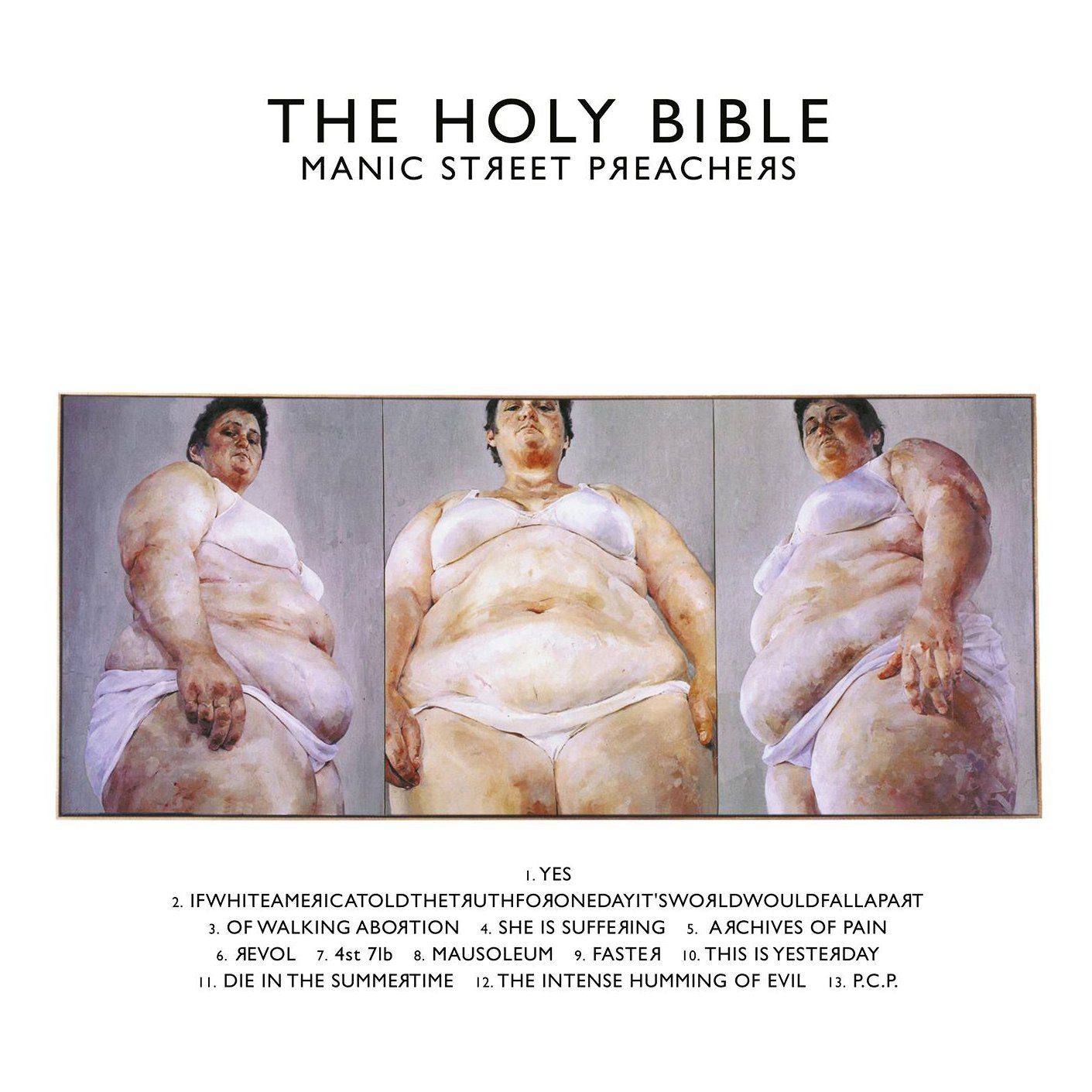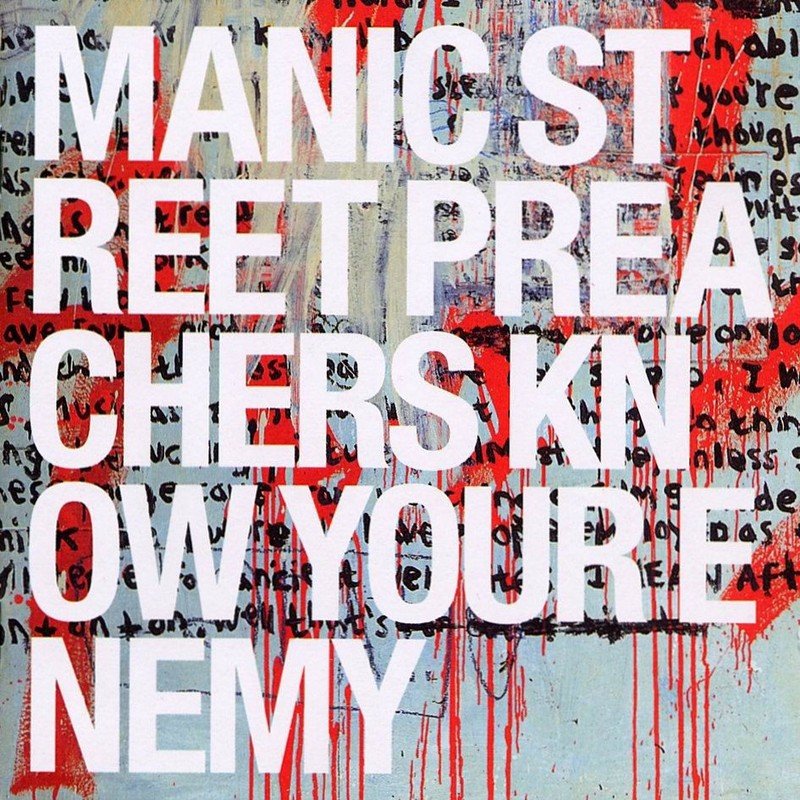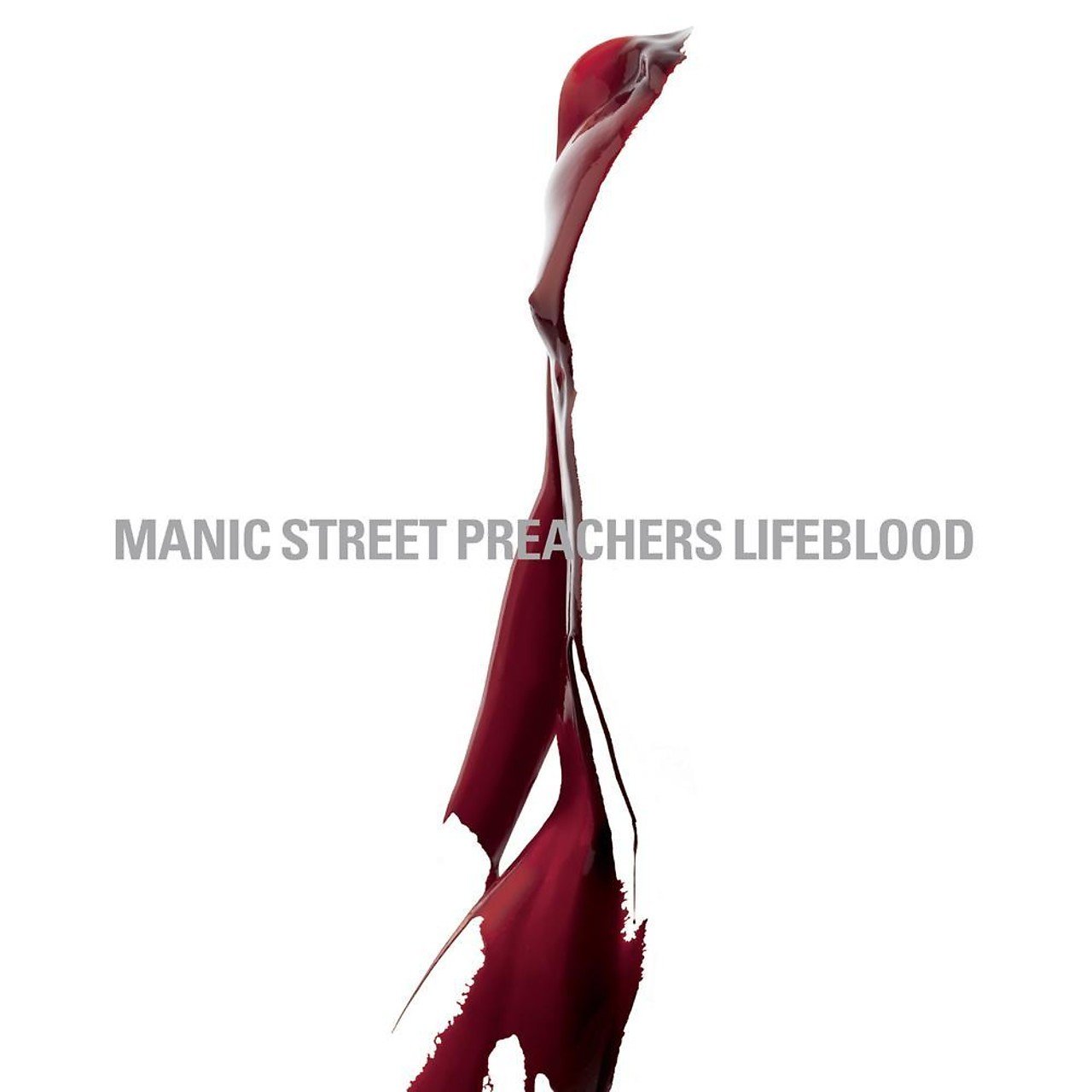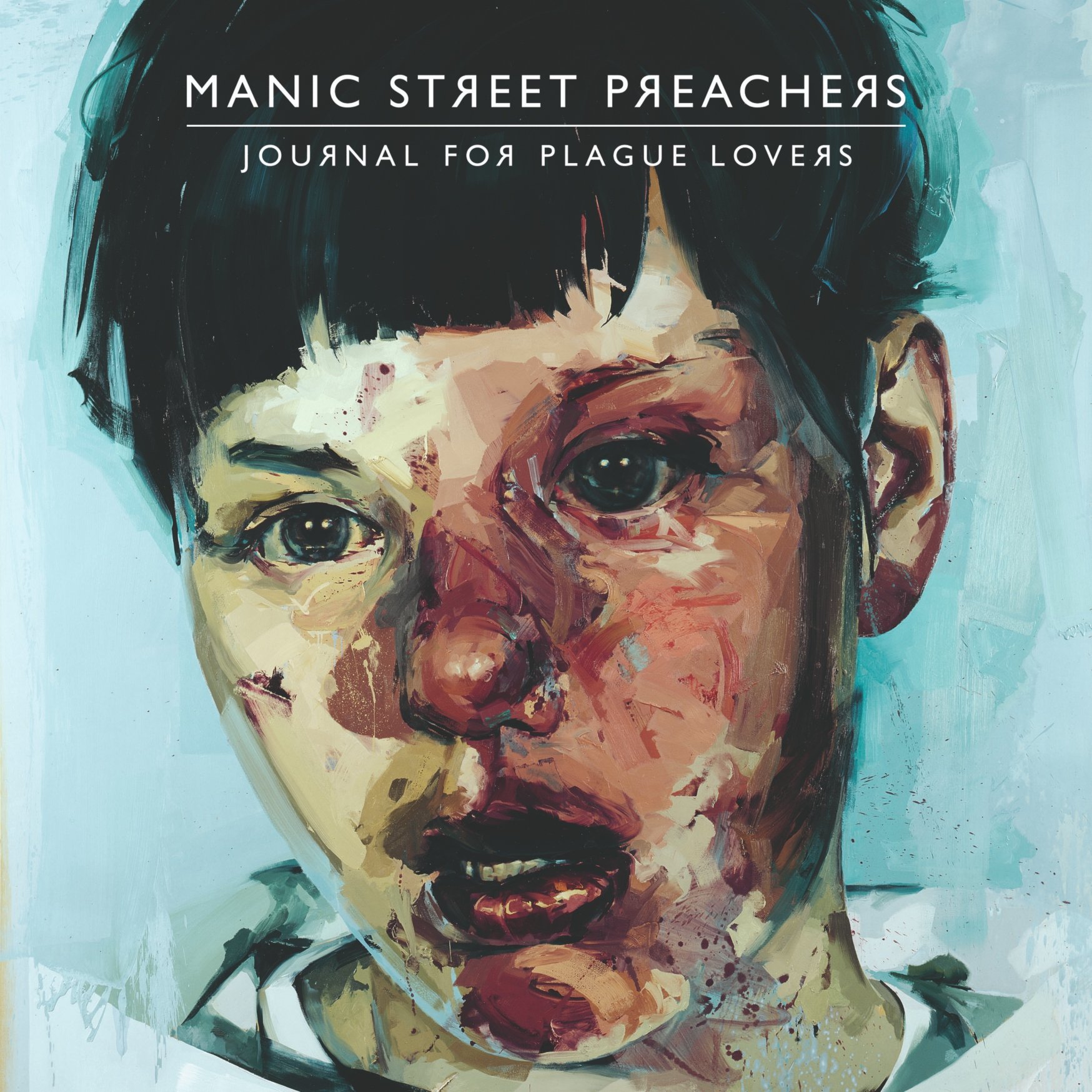Happy 25th Anniversary to Manic Street Preachers’ fifth studio album This Is My Truth Tell Me Yours, originally released September 14, 1998.
This Is My Truth Tell Me Yours was arguably the first Manic Street Preachers record that the UK mainstream media, MTV, the popular radio stations, the budding internet, and the record buying populace as a whole was actually excited about. This isn’t to say that previous records from the band had not been anticipated with great excitement. They had been, certainly. But the scope of those previous records—1992’s iconoclast debut Generation Terrorists, 1993’s sobering follow-up Gold Against the Soul, and the post-punk throb and gristle of 1994’s The Holy Bible—had been small occasions and appreciated by a devoted enclave.
This Is My Truth was coming off the back of the massively successful 1996 album Everything Must Go, a record that had debuted at number two in the UK charts and given the band four top ten singles. The following year they’d won two BRIT Awards for Best Band and Best Album and their song “A Design for Life,” a landmark single in British guitar music, had won an Ivor Novello award for Best Contemporary Song.
The zeitgeist was with them during these times. Britpop, and guitar music in general, was the most popular form and any band mindful of this was nudging themselves into the top twenty and playing decent sized venues across the land, even with a relatively weak set of songs (I’m looking at you, Menswear). Manic Street Preachers were an intelligent and classy antidote to the boorish and excessive Britpop brigade of Liam and Noel Gallagher and their ilk.
This was also the first Manic Street Preachers record that was solely the work of the trio James Dean Bradfield, Nicky Wire and Sean Moore. The band’s main lyricist and rhythm guitarist Richey Edwards had disappeared in January 1995 just prior to a promotional tour of the United States in support of The Holy Bible. Remaining song lyrics by Edwards had made it onto Everything Must Go. This Is My Truth was the first record to be solely authored by Wire.
In September 1998, when This Is My Truth was released, expectation was high. The record didn’t disappoint in terms of these expectations. Although Britpop was dead in the water by this point (thanks to Oasis and their much-maligned 1997 album Be Here Now), the Manics had been around before its rise and would transcend its demise with grace. As if to emphasize this, the first single to be released from the record, “If You Tolerate This Your Children Will Be Next”—a song that lyrically addressed the group of Welsh farmers who joined the International Brigade to fight Fascism during the Spanish Civil War—landed at #1 in the single charts. Intelligence in pop music had come of age.
And let’s take a second to understand the scope of that title. This Is My Truth Tell Me Yours was taken from a speech made by Nye Bevan, the Minister of Health and Housing in the post-Second World War UK government of Prime Minster Clement Atlee. Bevan was a fellow Welshman from a rough and ready working class background, a staunch socialist, and chiefly the architect of the National Health Service. By the time This Is My Truth’s release, the New Labour government of Tony Blair had been in power for just over a year. In this government, the socialist origins of the Labour movement had been dispensed with in favor of free market liberalism. The title of this record is tied up in so much political history yet acts as a reminder in this new dawn of political shapeshifting that there were once politicians of real integrity and real grit.
Listen to the Album:
This however probably wasn’t on most listeners or possibly even the band’s minds as the record debuted at number one in the album charts selling 136,000 copies in its first week. Nonetheless, it is testament, to the sheer intelligence that has always been bestowed upon a Manics record.
With This Is My Truth gaining footing in the European and Asian record markets, the band embarked on a mammoth worldwide tour in support of the record.
And where was I during this time? If you’d asked me back then in the summer of ‘98, I’d have probably just quoted a Manics lyric as a response. I’d spent a large portion of my time and money since Everything Must Go’s release gorging myself on the Manics back catalog, recording interviews and music videos from the television (remember, pre-internet), finding old copies of the NME and Melody Maker in dusty charity shops, and reading anything that had been quoted by the band in song or on record sleeves. I was also a working class lad still living on the council estate I grew up on. I had an unsatisfactory full-time job that earned me more money than I could spend. Naturally, the majority of it went toward clothes and records.
In the years between Everything Must Go and This Is My Truth something else remarkable had happened. I’d hit the legal age and become old enough to go out drinking and clubbing. My friends and I would hit the local pubs and get refreshed enough to try our luck at the indie disco in town. We’d jump and leap as Oasis, Blur, Suede, Ash, The Bluetones, and yes of course the Manics blasted out the club speakers. Afterwards, and after blowing our cab fare on more booze, we’d walk home through dimly lit streets hollering the latest Britpop hits.
The image I’ve painted of the times and of myself obviously seem rosy and full of merriment, yet there was something deeply lacking in my own life that was hard to fathom. A decent job, good friends, a few beers on the weekend all sounded reasonable, but there were very little prospects for a decent future off of my little council estate. I needed a record that could soundtrack and help me make sense of this existential dread, and This Is My Truth seemed to be it.
I’ve always seen This Is My Truth as an album of two halves. The first half springs forward with emotional and melancholic anthems that had by this point become the Manics’ bread and butter. Four of the five opening tracks were released as singles, and it’s easy to see why. The opening tracks “The Everlasting” and “If You Tolerate This Your Children Will Be Next” were both slow burning anthems, but the posture of these songs was sluggish in a kind of defeatism reserved for old age.
The other two singles, “You Stole the Sun From My Heart” and “Tsunami,” though lyrically dour, bound along and when played made dancefloors and moshpits exciting places to be.
The second half, beginning with “My Little Empire” is where the somber tone is turned up a few notches whilst the anthemic elements are dialed right down. It was within this second half that I found the sonic extension to my own strange late-teen depressive state and where I believe the record’s true heart lies.
It’s easy to write off this second half of the record, but there is a quality to it that is not as instant as those first opening songs and there are small moments that take time to reveal themselves over many listens. It’s as if you’ve been allowed to pass into an interzone of extraordinary revelations. This speaks to the lyrical content, but also the musical accompaniment. It is this section of the record I wish to devote my time to here.
Watch Live Performances:
Take for example the anguished cello that lies under “My Little Empire,” making the track as somber as anything on The Holy Bible. The next track, “I’m Not Working,” utilizes an incredibly dour drum pattern and a distorted hiss that slows the track to an almost complete standstill. Its sonic companion is Joy Division’s gloomy “The Eternal.” Yet where there is solemn despair there is also brightness, hope and, dare I say, joy.
Listen, for example, to the milkman whistle that suddenly bestows the already quite jaunty “You’re Tender and You’re Tired” and try not to crack a smile. Or how about that gorgeous orchestral swell that sends “Black Dog On My Shoulder” into the hills and to new heights of emotion. Even “Be Natural,” a fairly lackluster song in general, suddenly breaks its autumnal hum and launches into an achingly beautiful and bright chorus.
The second half of This Is My Truth also contains the stark beauty of “Born a Girl,” a song that drives the listener to become an almost voyeuristic peeping tom into the world of Nicky Wire and his desire to live as a girl in body and mind.
It is interesting to take a moment to pause and reflect on this particular song. The title and indeed the content came at the height of laddish Britpop in which making yourself out as feminine in anyway might get you bottled. It also came just as the faux-feminism of the Spice Girls was sweeping across the nation and being feminist meant taking on a brash and loud posture in the guise of “Girl Power.” “Born a Girl” was a brave statement to make in this climate. And this doesn’t just account for the lyrics; the music too is tender, austere and fragile.
What makes it more effective is that whilst Wire provides the lyrics, the song is sung by the very manly form of James Dean Bradfield. The contrast in the medium and the message suddenly becomes very clear. “Born a Girl” arrives as a crucial understanding of the Manic Street Preachers as a whole. The lyrical content was always provided by Wire and Richey Edwards and the vocal duties fell to Bradfield to communicate the ideas as a union. This had always been a successful mutual partnership. On “Born a Girl,” there is suddenly awareness to the listener that the Manics are individuals each contributing to the whole.
The only real misfire of This Is My Truth is the closing “S.Y.M.M.” (South Yorkshire Mass Murderer), a song whose lyrics broach the subject of the Hillsborough Disaster of April 1989 in which 96 people were killed in a human crush at the Hillsborough football stadium in Sheffield, England. Whilst the subject was close to the band’s heart and they had a year earlier played the Hillsborough Justice Concert held at Anfield Stadium, the lyrics seemed to spend a long time searching for the justification behind writing the song in the first place. Sonically speaking, the song is a studio made masterpiece with backward drums, chiming bells, haunting harmonies and shimmering organ. Yet, it ended the record rather limply with no sense of accomplishment or hope.
Twenty-five years on from the release of This Is My Truth, revisiting the album is in some ways a shock to the system that firstly a quarter of a century has passed by so swiftly and secondly that this record is still such a defining moment in the band’s career. Despite the sour tone and bleak outlook of most of these songs, the record still remains the band’s best selling effort and earned them another round of awards and accolades.
Enjoying this article? Click/tap on the album covers to explore more about Manic Street Preachers:
The record also exists within such a defining moment in my own life. Those late teen moments which bleed into early adulthood. I’m not pointing the finger directly at this record, as there are so many other motivations and explanations to be found, but the following year I had quit that unsatisfying job and was back in school studying film and media and re-sitting a bunch of exams I’d painfully failed a few years earlier.
I’m probably not alone in saying that Manic Street Preachers have sent me on the bendy road of education and continuous curiosity about the world, and This Is My Truth Tell Me Yours is a prime example of a record with many signposts pointing in many directions.
Stephen Lee Naish is the author of Modern Music Masters - Manic Street Preachers: MMM 4 and Riffs & Meaning: Manic Street Preachers & Know Your Enemy.
LISTEN:
Editor's note: this anniversary tribute was originally published in 2018 and has since been edited for accuracy and timeliness.





